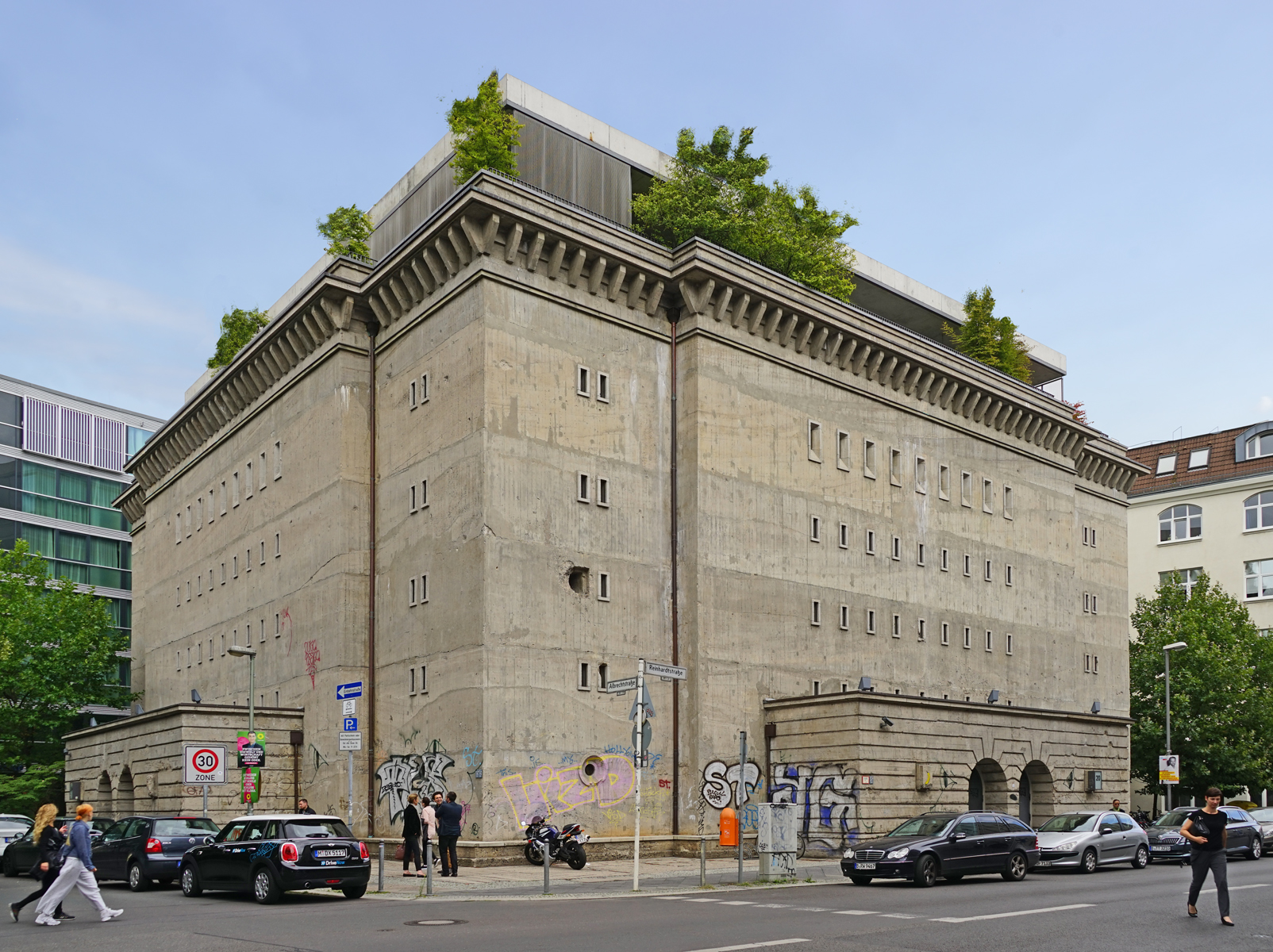From War Bunkers to Art Havens: Berlin’s Architectural Alchemy in Cultivating Cultural Landscapes
Berlin, a city deeply intertwined with historical upheavals and artistic metamorphosis, exemplifies how the past and present can converge in unique ways, particularly through the repurposing of buildings. This vibrant city has transformed its architectural relics into thriving cultural hubs, fostering an arts scene as eclectic and resilient as its history. Two poignant examples of this phenomenon are the Boros Collection, housed in a former WWII bunker, and Fotografiska Berlin, situated in a renowned former squat.

Jean-Pierre Dalbéra from Paris, France, CC BY 2.0, via Wikimedia Commons
The Boros Collection: A Modern Art Haven in a WWII Bunker
Amidst Berlin’s bustling streets stands an imposing structure of concrete, stark and stoic—a former WWII air-raid shelter. Built in 1942, this bunker has transcended its militaristic origins to become one of the most exclusive art spaces in Berlin, known as the Boros Collection. The transformation story began when Christian Boros, a contemporary art collector, purchased the bunker to house his private collection. Renovated in 2007, the bunker underwent a significant transformation, merging its somber history with a bright future. Notably, Boros has made a personal commitment to the space, residing with his family in an apartment constructed atop the bunker, blending his daily life with his passion for art.
The Boros Collection is not just a museum; it is a statement of resilience, a juxtaposition of the harsh realities of war with the peace and creativity of art. Within its thick, protective walls, the bunker hosts works by international contemporary artists, including Ai Weiwei, Olafur Eliasson, and Wolfgang Tillmans. This space, once meant to shield from bombs, now protects precious artworks and invites contemplation on the ironies of history.

endless popcorn © 2014 by mabi2000 is licensed under CC BY-SA 4.0
Fotografiska Berlin: A Cultural Revival in a Former Squat
In contrast to the stark utilitarianism of the Boros bunker, Fotografiska Berlin’s location in the old Kunsthaus Tacheles tells a different story of urban reclamation and creativity. The building, which was originally a department store before becoming one of the most famous artist squats post-Berlin Wall, represents a significant era in Berlin’s cultural history. Following the fall of the Wall, the Tacheles squat became a symbol of the city’s raw, unfiltered artistic spirit during the 1990s, a place where art and autonomy flourished amidst the ruins.

De-okin (talk) 14:44, 23 November 2008 (UTC), via Wikimedia Commons
Today, Fotografiska Berlin has taken over the Tacheles, turning it into a sophisticated photography museum that blends modern cultural activities with historic gravitas. Designed by the renowned Studio Aisslinger, this space now showcases world-class photography exhibitions and hosts vibrant cultural events that draw both locals and tourists. While it maintains high standards of curation and presentation, Fotografiska Berlin still nods to its past—the layers of graffiti on its walls serve as reminders of its rebellious, spirited origins.
Cultural Impact and Urban Transformation
Both the Boros Collection and Fotografiska Berlin illustrate the broader trend of Berlin’s engagement with its architectural past to enhance its cultural landscape. By repurposing spaces that were once scenes of conflict or abandonment, Berlin transforms its historical narrative into one of artistic celebration and public engagement. These art spaces are not merely places to display art; they are profound statements on time, history, and the power of transformation.
Berlin’s strategy of repurposing buildings for cultural use has not only provided unique venues for art exhibitions but also helped in preserving the city’s architectural heritage, contributing to its identity as a dynamic and creative urban center. The thoughtful integration of history with contemporary purpose in places like the Boros bunker and the Fotografiska building shows how spaces can evolve in meaning and function.
As cities around the world grapple with issues of urban development and historical preservation, Berlin serves as a compelling example of how to creatively merge the two. Its approach invites a reconsideration of how urban spaces are valued and utilized, suggesting that even the most unassuming buildings can become bastions of culture and history, provided they are seen through the lens of potential and possibility. In Berlin, the past does not overshadow the future; instead, it serves as a foundation upon which a vibrant cultural scene continues to thrive.
I had the honour of being invited to the opening of the Elizabeth Porodina exhibition. I took some impressions from my visit, along with some from the Miles Aldridge collection.












